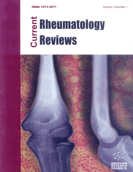Abstract
The diagnosis of gout is usually straightforward and should normally rely upon the identification of monosodium urate crystals in synovial fluid. EULAR have recently developed consensus recommendations regarding the diagnosis of gout. Where examination of synovial fluid is not possible or impractical, the best approach differs depending upon the context: in clinical research, classification criteria are necessary whereas in clinical practice, all available information should be carefully weighed and considered by the physician. A number of clinical features are useful pointers towards the diagnosis of gout and ultrasound is emerging as a useful diagnostic tool. The finding of hyperechoic enhancement of the superficial margin of the hyaline cartilage is a sensitive and specific feature of gout, although the performance of ultrasound in early disease is unclear. Serum uric acid is not a useful test for the diagnosis of gout but is very important in the long-term management. The 1977 American Rheumatism Association classification criteria have many shortcomings and improved criteria are urgently required for epidemiology and clinical research. The complete diagnostic evaluation may involve assessment of 24-hour urinary excretion of uric acid in a few selected patients and all patients should be evaluated for common comorbidities especially the metabolic syndrome and risk factors for cardiovascular disease.
Keywords: Gout, diagnosis, ultrasonography, classification criteria, synovial fluid, Tophi, metatarsophalangeal joint, Tophus, pyrophosphate deposition disease











